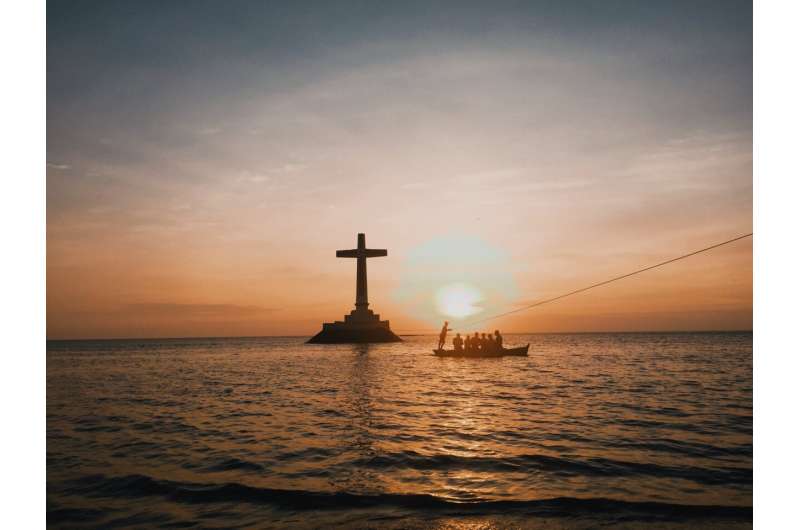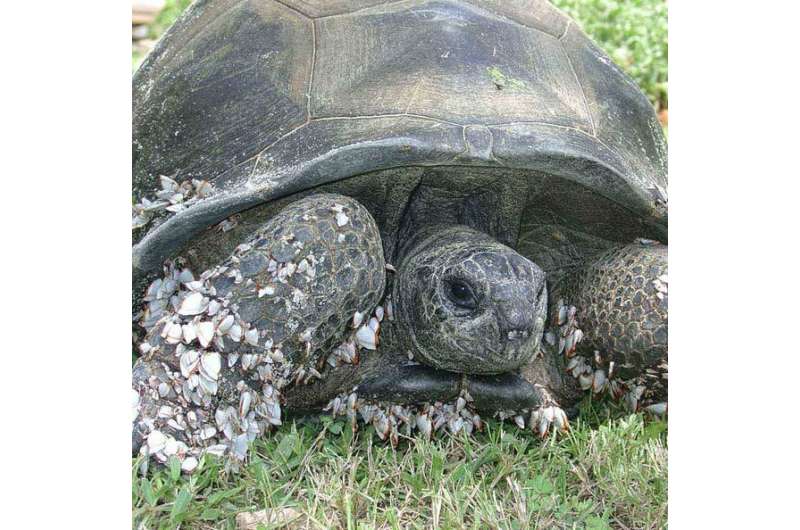One incredible ocean crossing may have made human evolution possible

Humans evolved in Africa, along with chimpanzees, gorillas and monkeys. But primates themselves appear to have evolved elsewhere——before colonizing Africa. At the time, around 50 million years ago, Africa was an island isolated from the rest of the world by ocean—so how did primates get there?
A land bridge is the obvious explanation, but the currently argues against it. Instead, we're left with a far more unlikely scenario: early primates may have rafted to Africa, floating hundreds of miles across oceans on vegetation and debris.
Such oceanic dispersal was once seen as far-fetched and wildly speculative by many scientists. Some still support the , either disputing the geological evidence, or arguing that crossed into Africa long before the current fossil record suggests, before the continents broke up.
But there's an emerging consensus that oceanic dispersal is far more common than once supposed. , , , and have all been found to colonize island continents in this way—including a that took monkeys from Africa to South America . These events are incredibly rare but, given huge spans of time, such freak events inevitably influence evolution—including our own origins.
Primate origins
Humans appeared in southern Africa between - years ago. We know we come from Africa because our diversity is highest there, and there are lots of of there.
Our closest relatives, chimps and gorillas, are also native to Africa, alongside baboons and monkeys. But primates' closest living relatives——all inhabit Asia or, in the case of rodents, evolved there. Fossils provide somewhat conflicting evidence, but they also suggest primates arose outside of Africa.
The oldest primate relative, Purgatorius, , just after the dinosaurs disappeared. .
The oldest true primates also occur outside Africa. Teilhardina, related to monkeys and apes, lived 55 million years ago, throughout . Primates arrived in Africa later. Lemur-like fossils appear there , and monkey-like fossils around 40 million years ago.
But Africa split from South America and became an island 100 million years ago, and only connected with Asia . If primates colonized Africa during the 80 million years the continent spent isolated, then they needed to cross water.

Ocean crossings
The idea of is central to the theory of evolution. Studying the Galapagos Islands, Darwin saw only a few tortoises, iguanas, snakes, and one small mammal, the rice rat. Further out to sea, on islands like Tahiti, were only little lizards.
Darwin that these patterns were hard to explain in terms of Creationism—in which case, similar species should exist everywhere—but they made sense if species crossed water to colonize islands, with fewer species surviving to colonize more distant islands.
He was right. Studies have found tortoises can without food or water—they probably bobbed along until hitting the Galapagos. And in 1995, iguanas swept offshore by hurricanes washed up , very much alive, after riding on debris. Galapagos iguanas likely traveled this way.
The odds are against such crossings. A lucky combination of conditions—a large raft of vegetation, the and , a viable population, a well-timed landfall—is needed for successful colonization. Many animals swept offshore simply die of thirst or starvation before hitting islands. Most never make landfall; they disappear at sea, food for sharks. That's why ocean islands, especially distant ones, .
Rafting was once treated as an evolutionary novelty: a curious thing happening in obscure places like the Galapagos, but irrelevant to evolution on continents. But it's since emerged that rafts of or —stands of trees swept out to sea—may actually explain many animal distributions across the world.
Rafting
Several primate rafting events are well established. Today, Madagascar has a diverse lemur fauna. Lemurs arrived from Africa around 20 million years ago. Since Madagascar has been an island since the time of the dinosaurs, they apparently the 400 kilometer-wide Mozambique Channel. Remarkably, the strange aye-aye crossed to Madagascar separately from the other lemurs.
Even more extraordinary is the existence of monkeys in South America: howlers, spider monkeys and marmosets. They arrived , again from Africa. They had to cross the Atlantic—narrower then, but still . From South America, monkeys rafted again: to , then twice to the .

But before any of this could happen, rafting events would first need to bring primates to : one brought the ancestor of lemurs, another carried the ancestor of monkeys, apes, and ourselves. It may seem implausible—and it's still not entirely clear where they came from—but no other scenario fits the evidence.
Rafting explains how rodents colonized Africa, . Rafting likely explains how Afrotheria, the group containing elephants and aardvarks, got to Africa. Marsupials, evolving in , probably rafted to , then , and finally . Other oceanic crossings include , and , and to Madagascar.
Oceanic crossings aren't an evolutionary subplot; they're central to the story. They explain the evolution of monkeys, elephants, kangaroos, rodents, lemurs—and us. And they show that evolution isn't always driven by ordinary, everyday processes but also by bizarrely improbable events.
Macroevolution
One of Darwin's great insights was the idea that —small mutations, predation, competition—could slowly change species, given time. But over millions or billions of years, rare, low-probability, high-impact events—"" events—also happen.
Some are immensely destructive, like , , and —or viruses jumping hosts. But others are creative, like , between multicellular species—and rafting.
The role rafting played in our history shows how much evolution comes down to chance. Had anything gone differently—the weather was bad, the seas rough, the raft washed up on a desert island, hungry predators waited on the beach, no males aboard—colonization would have failed. No monkeys, no apes—no humans.
It seems our ancestors beat odds that make Powerball lotteries seem like a safe bet. Had anything had gone differently, the evolution of life might look rather different than it does. At a minimum, we wouldn't be here to wonder about it.
Provided by The Conversation
This article is republished from under a Creative Commons license. Read the .![]()





















